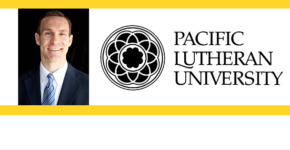 How do you study hope?
How do you study hope?
David Ward, associate professor of marriage and family therapy at Pacific Lutheran University, breaks down the components hope and how individuals can foster their own.
Dr. Ward has been teaching at PLU since 2005. Dr. Ward loves teaching and has presented at the national and local level on various topics, including his research on hope. His dissertation on Hope in Couples Therapy won the dissertation of the year award from the American Association for Marriage and Family Therapy and his work in this area is published in the April 2010 volume of the Journal of Marital and Family Therapy. He was honored in 2009 as the Educator of the Year by the Washington Association for Marriage and Family Therapy. Dr. Ward maintains a private practice where he works with couples, families, and individuals. Dr. Ward has been married for 14 years and he and his wife Kathryn have 4 children. In his spare time he enjoys coaching flag football and soccer, and waterskiing in cold Washington lakes 7 months out of the year.
Building Hope to Attain Goals
My research has focused on understanding hope and developing a theory and scale of hope that takes into consideration both individual and relational processes. While my theory of hope developed from research done in the context of therapy, the theory has broader application to any specific goal that an individual wants to attain. Hope is defined as the belief and feeling that a desired outcome (goal) is possible. This hope is supported by four key components: Options, Action, External Evidence, and Connection. The Options component recognizes the fluctuation in hope based on an individual’s beliefs and feelings that there are options to choose from in order to reach one’s desired outcomes. The Action component recognizes that hope is influenced by the individual’s beliefs that they have the ability to achieve a desired outcome, and their willingness to act in order to achieve the outcome. The External Evidence component of hope recognizes that hope fluctuates based on the ability to look outside of one’s own self and see evidence that the desired outcome is possible. Finally, the Connection component recognizes the importance of connection and support from others in successful goal achievement.
From a practical perspective, an individual who wants to achieve a stated goal can identify the components of hope that are areas of strength or areas that need attention, develop specific strategies to improve hope in one or more of these areas, and consequently improve the likelihood of actual goal attainment. For example, if an individual wants to engage in more regular exercise, but lacks the connection and support from others, they can improve their chances for goal attainment by seeking out a supportive exercise community. If that individual is struggling with their own belief that they can accomplish their goal, they can practice positive thinking strategies to counteract the hope draining negativity. Hope matters, and identifying strategies to build hope can lead to change.
